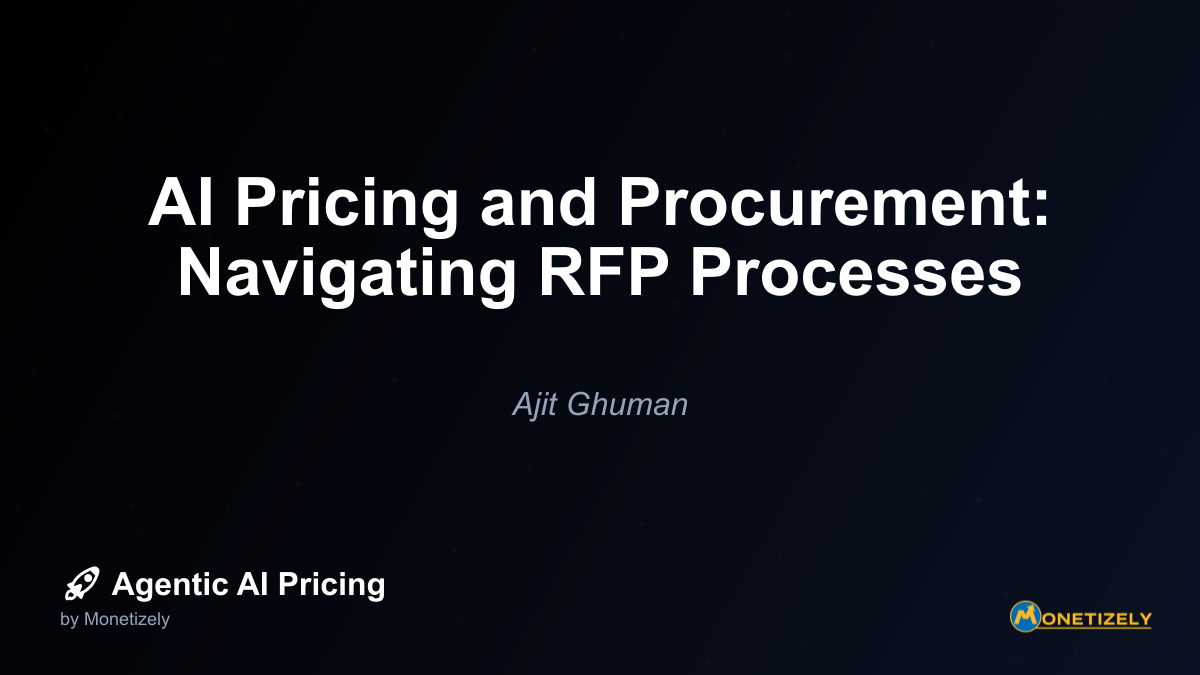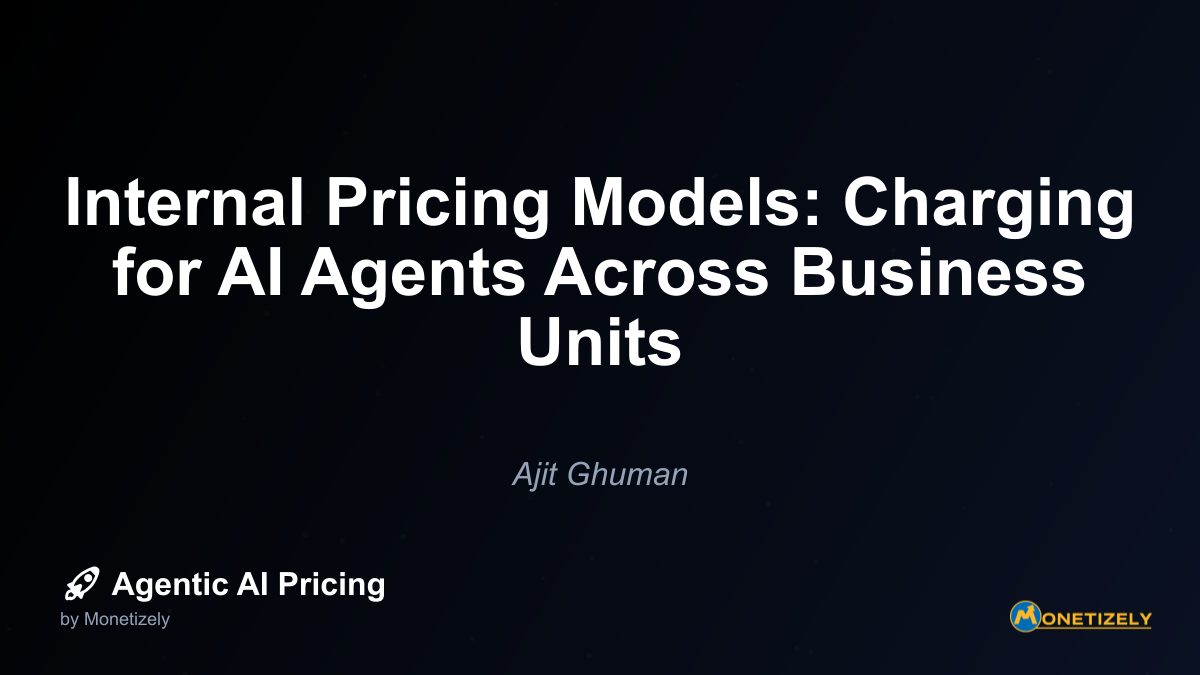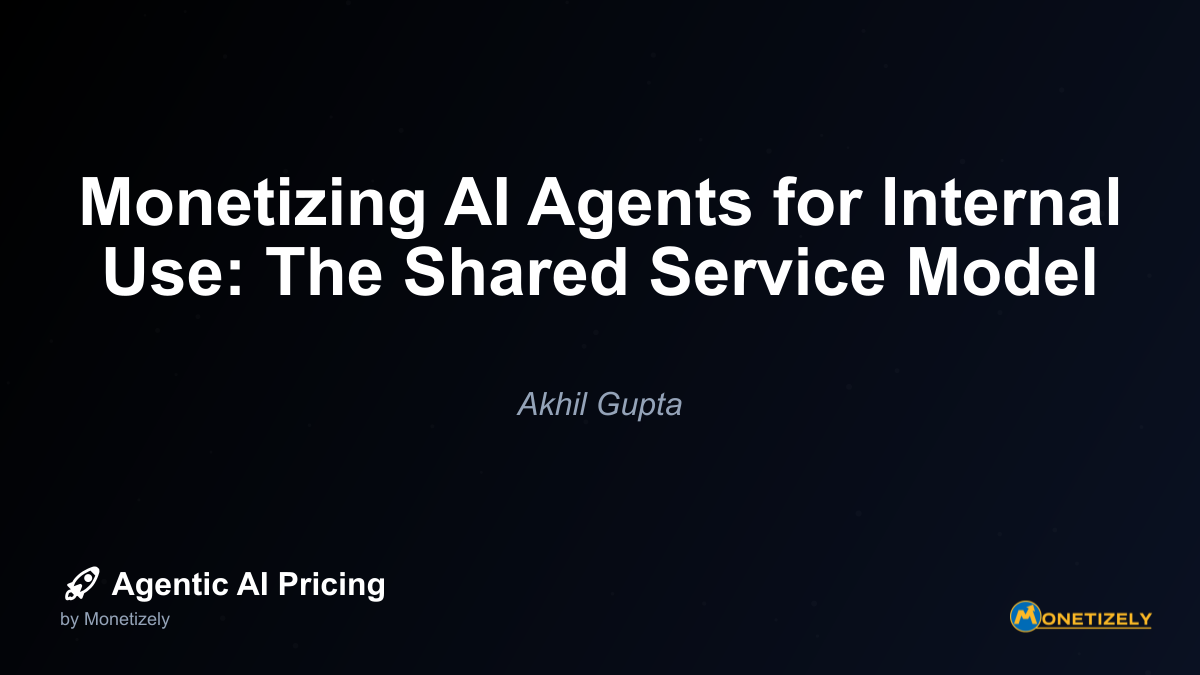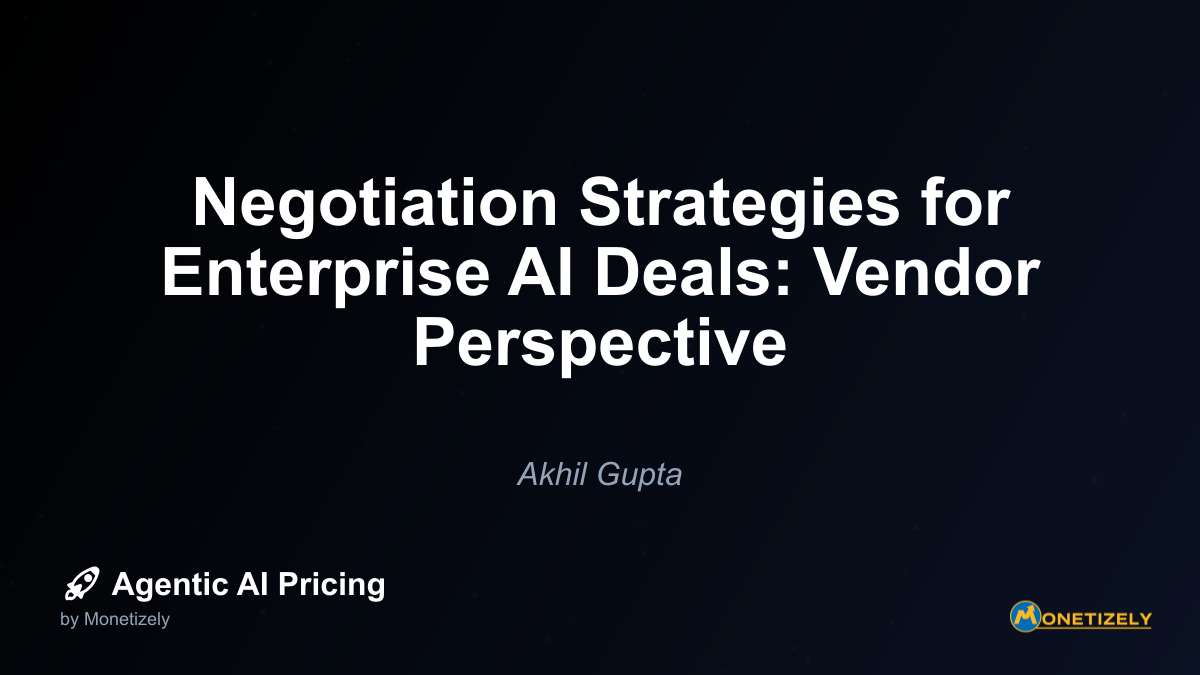· Ajit Ghuman · Enterprise · 5 min read
Volume Discount Strategies for Enterprise AI Deployments
AI and SaaS Pricing Masterclass
Learn the art of strategic pricing directly from industry experts. Our comprehensive course provides frameworks and methodologies for optimizing your pricing strategy in the evolving AI landscape. Earn a professional certification that can be imported directly to your LinkedIn profile.
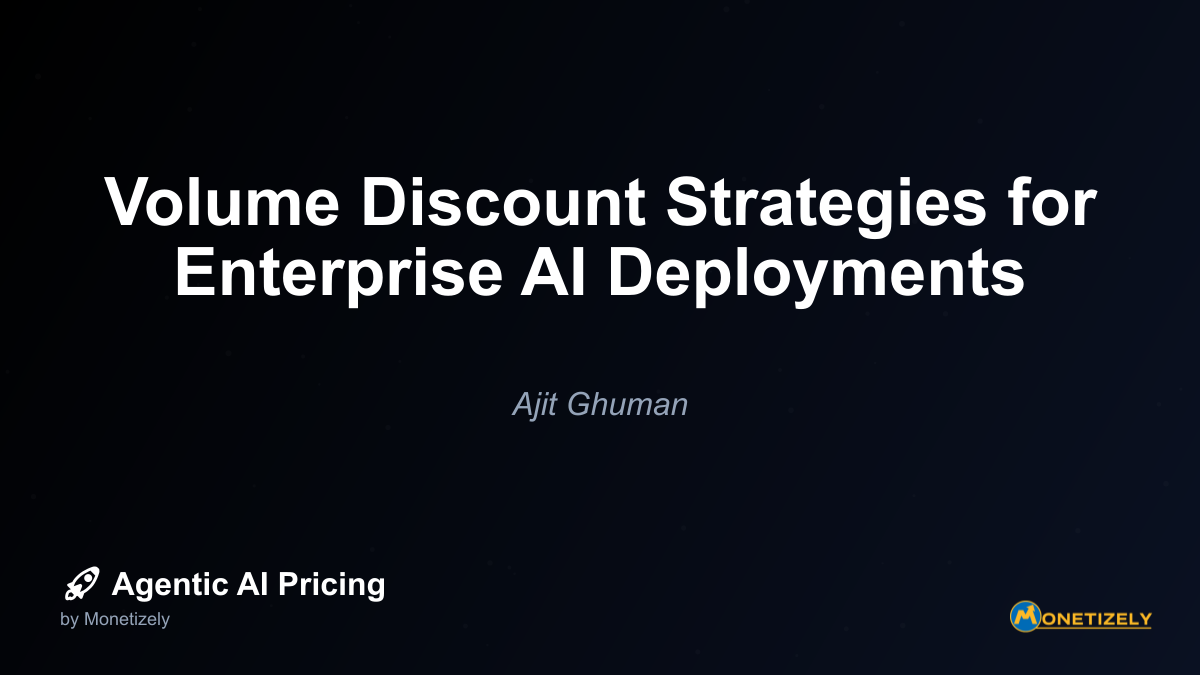
As AI technology and market dynamics evolve, volume discount strategies are likely to undergo significant transformation. Several emerging trends will shape the future landscape:
Outcome-Based Volume Discounts
Rather than focusing solely on usage metrics, future volume discount strategies may increasingly incorporate outcome-based elements:
- Discounts tied to measurable business outcomes achieved through AI implementation
- Scaled pricing based on value delivered rather than resources consumed
- Risk-sharing models where vendors participate in both the costs and benefits of expanded deployment
This approach aligns vendor incentives more directly with customer success, potentially creating more sustainable partnerships.
Dynamic Volume Pricing
Advances in pricing technology may enable more sophisticated approaches:
- Real-time adjustment of volume discounts based on usage patterns
- AI-powered pricing engines that optimize discount levels automatically
- Personalized volume thresholds based on customer-specific usage characteristics
These approaches could maximize both adoption and revenue by tailoring discount structures to individual customer needs.
Ecosystem-Based Volume Incentives
As AI solutions become increasingly interconnected, volume discounts may extend beyond single-vendor relationships:
- Cross-vendor volume benefits for complementary AI technologies
- Ecosystem-wide enterprise agreements covering multiple AI capabilities
- Marketplace models with volume-based benefits across participating vendors
This evolution recognizes that enterprise AI value often derives from the integration of multiple specialized capabilities rather than isolated solutions.
Sustainability-Linked Volume Pricing
With growing awareness of AI’s environmental impact, future volume discount strategies may incorporate sustainability elements:
- Enhanced discounts for efficient resource utilization
- Pricing incentives for using renewable energy-powered compute resources
- Volume benefits tied to responsible AI usage practices
These approaches align economic incentives with environmental and ethical considerations, potentially differentiating vendors in competitive markets.
Hybrid Human-AI Pricing Models
As AI augments rather than replaces human capabilities in many contexts, volume discount strategies may evolve to reflect this reality:
- Combined pricing for AI capabilities and human expertise
- Volume discounts that scale differently across automated and human-assisted components
- Flexible allocation between AI and human resources within enterprise agreements
This approach recognizes that optimal enterprise AI deployments often involve a complementary relationship between human and artificial intelligence.
Best Practices for Implementing Volume Discount Strategies
Based on observed successes across the industry, several best practices emerge for implementing effective volume discount strategies:
1. Start with Value Metrics
Before designing discount tiers, identify the key metrics that reflect value delivery to customers. These metrics should:
- Align with customer business outcomes
- Scale predictably with deployment size
- Be easily measurable and verifiable
- Reflect actual usage rather than theoretical capacity
By grounding discount structures in value metrics, both parties can better assess the fairness and sustainability of the arrangement.
2. Incorporate Total Cost of Ownership
Effective volume discount strategies consider the complete financial picture:
- Implementation and integration costs
- Training and change management expenses
- Ongoing operational requirements
- Potential cost savings and revenue enhancements
This comprehensive view helps customers evaluate the true impact of volume pricing beyond the headline discount percentages.
3. Design for Simplicity and Transparency
Complex discount structures create friction in the sales process and may undermine trust:
- Limit the number of pricing tiers to improve clarity
- Use consistent discount rationales across customer segments
- Provide transparent tools for estimating costs at different volumes
- Avoid complex conditions that are difficult to track or verify
Simplicity improves both customer understanding and internal compliance with pricing policies.
4. Build in Flexibility for Evolution
AI technologies and use cases evolve rapidly, requiring pricing structures that can adapt:
- Include provisions for reviewing and adjusting discount structures
- Build mechanisms for transitioning between pricing models as needs change
- Establish clear processes for handling edge cases and exceptions
- Create pathways for customers to optimize their deployment approach over time
This flexibility helps maintain alignment between pricing and value as both the technology and customer needs mature.
5. Align Internal Incentives
Successful implementation requires coordination across organizational functions:
- Ensure sales compensation aligns with profitability, not just revenue
- Provide clear guidelines for discount approval processes
- Establish cross-functional governance for pricing strategy
- Invest in training to help teams articulate value rather than defaulting to discounting
This alignment helps prevent internal conflicts that can undermine pricing discipline.
Conclusion: Strategic Approach to AI Volume Discounting
Volume discount strategies for enterprise AI deployments require balancing competing objectives: encouraging adoption, maintaining margins, and delivering customer value. The most successful approaches recognize that effective volume pricing is not simply about offering percentage reductions as quantities increase, but about creating structures that align with the economics and value delivery of AI solutions at different scales.
As AI technology continues to evolve, so too will the approaches to volume pricing. The most successful vendors will be those who view volume discounting not as a necessary competitive concession, but as a strategic tool for building long-term customer relationships and maximizing the value created through enterprise AI adoption.
Organizations implementing AI solutions should approach volume discount negotiations with a clear understanding of their deployment roadmap, value expectations, and internal economics. By focusing discussions on value alignment rather than discount percentages, both vendors and customers can create arrangements that foster successful long-term partnerships.
The future of enterprise AI pricing will likely see increasing sophistication in how volume discounts are structured, implemented, and evaluated. As the market matures, expect to see greater emphasis on outcome-based components, ecosystem integration, and sustainability considerations. These evolutions will create new opportunities for innovative pricing approaches that better reflect the transformative potential of AI technology in enterprise environments.
For organizations on both sides of the AI marketplace, developing a sophisticated understanding of volume discount strategy will remain a critical competitive advantage in an increasingly AI-driven business landscape.
Co-Founder & CEO
Ajit is the author of Price To Scale, a top book on SaaS Pricing and is the Founder of Monetizely. Ajit has led and worked in pricing and product marketing at firms like Twilio, Narvar and Medallia. His work has been featured in Forbes and VentureBeat. Ajit regularly consults with software companies from Seed stage to post-IPO on pricing strategy. Ajit is also a highly-rated co-instructor for 'The Art of SaaS Pricing and Monetization' on Maven.
Pricing Strategy Audit
Let our experts analyze your current pricing strategy and identify opportunities for improvement. Our data-driven assessment will help you unlock untapped revenue potential and optimize your AI pricing approach.

